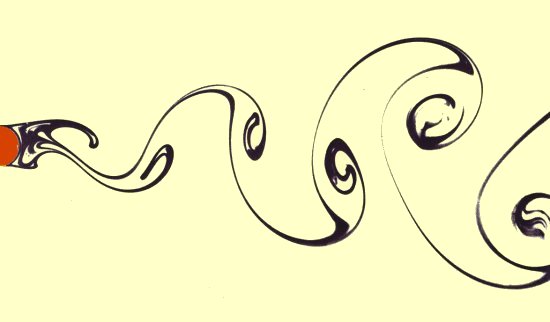Aeolian Vibration
Today, the Aeolian harp. The University of Houston's College of Engineering presents this series about the machines that make our civilization run, and the people whose ingenuity created them.
Aeolus was the Greek god of the winds and ruler of the island of Aeolia. In the Odyssey, he gives wandering Odysseus favorable winds. But he also hands him a bag of ill winds, with orders not to open it. Naturally, Odysseus' companions grow curious. Like Pandora, they open the bag and summon up trouble.
The Aeolian harp is a Greek invention, played by the winds. It has a dozen or so strings, all the same length -- about five feet. Each has a different diameter, but they're all tensioned to the same unison pitch. As wind blows over the strings, different overtones are excited on each one. You hear the third, the twelfth, the upper octave. A strange mélange of sound floats above that fundamental unison drone.
Years ago, when I taught at Washington State University on the windblown steppe of eastern Washington, I had a contract with the Bonneville Power Company. My task was to study Aeolian vibration as it occurred, not in a harp, but in their power lines.
In a gentle wind, a power line will sing, just as a catgut or nylon string will sing in an Aeolian harp. That vibration can, eventually, cause the wire to fatigue and break. In a severe wind, or when ice forms an airfoil shape around the wire, it can gallop wildly and cause severe damage. Vast human ingenuity has gone into the problem of damping out vibration to protect the wire.
So imagine wind passing over any cylinder: The air has to speed up to get around it. A fast-moving stream separates from the cylinder and whooshes away behind it. That creates a low-pressure region just behind the cylinder. The two sheets of fast-moving air both want to collapse into the space behind the cylinder, but they do so alternately, in a rhythm that depends on the size of the cylinder and the airspeed.
That rhythmic collapse is what makes wires sing. You can calculate its pitch in cycles per second, or hertz. It comes to about one fifth of the airspeed divided by the diameter.
You can also feel the Aeolian sound. Next time a breeze is blowing at, say, twenty feet per second, stand a few feet behind a one-foot-diameter telephone pole. Wet your finger, put it in the wake, and you'll feel a four-cycle-per-second flutter. A power cable, a fifteenth of a foot in diameter, gives a sixty-hertz hum. In that same breeze, a gut string, one two-hundredth of a foot in diameter, will sound the note A from a woman's mid-voice range.
The Aeolian harp came back to our modern world when Renaissance scientist Athanasius Kircher recreated it. By 1800, it'd entered the Romantic imagination. Coleridge worked for years on his poem The Aeolian Harp. And, in one version, he says:
Methinks, it should have been impossible
Not to love all things in a World like this,
Where e'en the Breezes of the simple Air
Possess the power and Spirit of Melody!
I'm John Lienhard, at the University of Houston, where we're interested in the way inventive minds work.
(Theme music)
Bonner, S., Aeolian harp. The New Grove Dictionary of Music & Musicians (Stanley Sadie, ed.). Vol. 1, pp. 115-117.
Lienhard, J., Synopsis of Lift, Drag, and Vortex Frequency Data for Rigid Circular Cylinders. Washington State University, College of Engineering Bulletin No. 300, 1966. (For a copy of this report in PDF format, CLICK HERE. This is a large, 2.4 Mb, file.)
See also the Wikipedia article on Aeolian harps.
Here's a nice example of an Aeolian harp: https://www.youtube.com/watch?v=rmP5XaNYlkI

Typical vortex path shed from the red cylinder on the left, as fluid moves to the right.